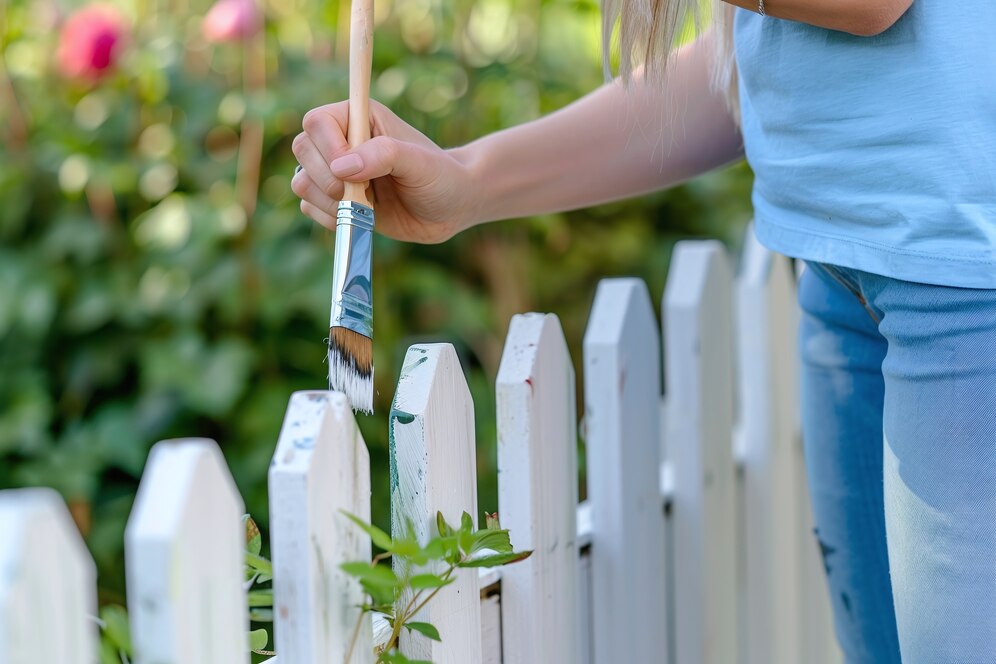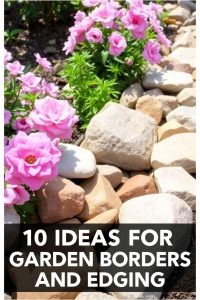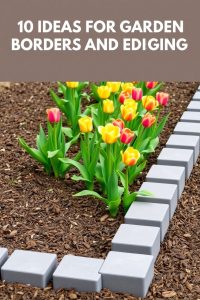
10 Simple Garden Border and Edging Ideas to Shape Your Outdoor Space

A neat garden needs strong edges. Borders help define spaces and give your yard a clean, finished look. They guide the eyes, keep plants in place, and add style to any garden. Even a small yard can look polished with the right edging.
There’s no one-size-fits-all choice. Some gardens need soft curves. Others need straight, strong lines. Natural stone, bricks, metal strips, or even plants can form the perfect edge. Each type brings a different feel. A rustic garden may shine with logs or rocks. A modern yard might need steel or concrete lines.
These ideas work with flower beds, vegetable plots, or paths. Pick one that fits your space and taste. It doesn’t take much to create a big impact. Explore ten easy ways to shape your garden and give it that finished touch. Clean lines. Clear sections. A better-looking garden starts at the edge.
10 Ideas for Garden Borders and Edging
A garden without borders can feel unfinished. Borders and edging help create order, define spaces, and highlight plants. They also add beauty, personality, and structure.
From classic to modern, natural to bold, you can find a style that fits your garden. The right edging ties everything together. It frames your plants and paths, keeps mulch and soil in place, and adds charm.
This blog covers 10 beautiful and practical ideas for garden borders and edging. Each one fits a different style and budget. Use them to inspire your own garden and turn any outdoor space into a place of peace and beauty.
1. Natural Stone Edging

Stone gives gardens a timeless, grounded look. Use flat stones for a neat line or mix rough ones for a rustic feel. Stone works well with flower beds, paths, or ponds. It blends into nature, yet still stands out.
Dry stack them for a natural style or set them in mortar for strength. Mix colors or stay with one tone. Stone lasts for years with little upkeep. Rain, wind, and sun make it even more beautiful over time.
2. Brick Border Edging

Brick edges add color, charm, and order. Use them to line flower beds or walkways. Lay them flat for a tidy edge or stand them up for a bold line. You can create patterns like herringbone or basket weave for extra detail.
Bricks look good in classic or modern gardens. They come in many shades of red, brown, or gray. Over time, bricks develop a worn look that adds character. They also help keep mulch in place.
3. Wooden Log Edging

Wood adds warmth and a natural look. Logs or wood rounds work well in cottage and country gardens. Use small logs cut to the same size for a uniform border. Or mix heights for a playful edge.
You can lay logs flat, stand them upright, or stack them. Use untreated wood for a rustic feel or treated wood for longer life. Wood pairs well with wildflowers, herbs, and grassy plants.
4. Metal Edging Strips

Metal gives a clean, crisp line. It suits modern gardens with strong shapes and lines. Steel or aluminum strips bend easily and work well for curves or straight borders. Rusted metal gives a soft, earthy color. Painted metal adds brightness or contrast.
Metal stays in place and doesn’t rot. It’s also easy to install. Thin edges create the illusion of floating plants or tidy gravel beds.
5. Concrete Border Blocks

Concrete borders offer strength and clean lines. Use pre-made blocks for fast results. Set them in a line for a simple look or create patterns for visual interest. Concrete can be gray or stained in other colors.
It holds up well in all seasons. It also keeps grass and weeds from spreading into your garden beds. Great for flower beds, tree rings, and pathways.
6. Gravel and Pebble Borders

Loose gravel or pebbles create soft, natural edges. You can dig a shallow trench and fill it with stones to form a border. Gravel works well around stepping stones or to edge paths and lawns.
Choose colors that match or contrast with your garden. White, gray, or river rock all look great. Gravel also improves drainage and discourages weeds.
7. Living Plant Edges

Low-growing plants can serve as soft, living borders. Use lavender, thyme, boxwood, or moss to edge beds or paths. These plants offer color, texture, and scent. They also attract bees and butterflies.
Clip them for shape or let them grow wild. Living edges blend the garden with nature. They work well in both formal and informal spaces.
8. Bamboo Garden Borders

Bamboo gives gardens a tropical, natural look. Use whole bamboo stalks or short sections to create borders. Tie them together or place them side by side for a neat edge.
Bamboo suits Asian-style gardens and pairs well with rocks and water features. It is lightweight, strong, and eco-friendly.
9. Recycled Material Edging

Old roof tiles, glass bottles, or reclaimed bricks can all become garden borders. Set tiles in the ground like waves. Line bottles upside down for a colorful glass edge. Use broken pavers for a jagged stone look.
These borders add charm and personality. They also help reduce waste and make the garden feel unique.
10. Woven Wattle Fencing

Wattle fencing uses thin branches woven between wooden stakes. It works well for small garden beds or herbs. Willow and hazel are common materials.
Wattle adds a handmade, earthy feel. It’s great for raised beds or to edge vegetable plots. It also blends well with rustic and country-style gardens.
FAQs
1. What is the purpose of garden edging?
It defines spaces, keeps soil and mulch in place, and adds a finished look to your garden.
2. Which edging material lasts the longest?
Stone, metal, and concrete are the most durable. They resist weather and wear.
3. Can I install garden edging by myself?
Yes. Many types, like plastic, wood, and stone, are simple enough for DIY projects.
4. How deep should edging go into the ground?
Most edging should go at least 4–6 inches deep to stay stable and prevent grass from growing into the garden.
5. What edging works best for curved gardens?
Flexible options like metal strips, plastic, and gravel work best for curves.
Conclusion
A garden with good borders feels complete. Edging brings order, beauty, and structure. From simple stone lines to living plant edges, there’s a style for every garden. Each idea brings its own charm. Some look tidy and modern. Others feel soft and natural. Try mixing different edges to match the mood of each space. Your garden deserves borders that match its beauty.
Want help creating a custom prompt for one of the ideas? Or need vertical vs. horizontal format? Just say the word!
